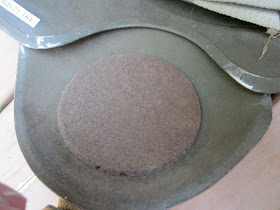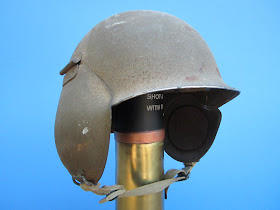More, or less, than meets the eye
Found on Ebay a few years ago, these liners frequently turn up, this caught my eye. Although it certainly not a combat helmet it does fit in nicely with the collection, if only as an oddity. All will be revealed.
This American Legion color guard helmet (liner) looks like the typical M1 liner.
For the pre-WWII version of the Legion helmet, go here.
Emblazoned with the American Legion insignia, this lid is ready for a parade.
Here's where we start to notice some differences. Compare the rivet placement with the conventional M1 liner.
Hey, what gives? Not only is the rivet placement different but the number and type of rivets is different.
This heavily dimpled rivet is unlike anything on any M1 liner.
This is a Westinghouse liner,
but check out the suspension:
American Legion suspension
M1 suspension. All completely different.
The chinstrap is a pretty cheap affair, fabric with a blackened slider buckle
This close up shows what almost appear to be button holes, though their purpose is unclear.
The fasteners for the chinstrap are unique to this liner.
Its a mysterious liner, so familiar yet so different
It's interesting how the venerable M1 lives on in various organizations, though as a front-line helmet its day is long bygone; perhaps a tribute to a reliable old mainstay of the American GI.

























































